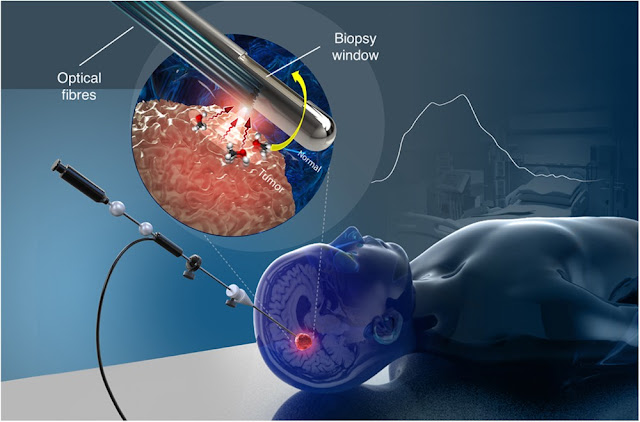 |
| Raman Spectroscopy |
Raman Spectroscopy
plays a crucial role in advancing research and quality control processes within
the fields of food science and agriculture. Its applications span from
identifying chemical compositions to assessing food safety and crop quality.
- Food Quality Assessment:
Raman Spectroscopy is utilized for rapid and non-destructive assessment of
food quality parameters such as freshness, ripeness, and nutritional
content. By analyzing molecular vibrations, it can identify characteristic
biomolecules in food products, providing insights into their composition
and overall quality.
- Detection of Contaminants:
In food safety applications, Raman Spectroscopy is employed for the
detection of contaminants such as pesticides, toxins, and pathogens. Its
high sensitivity and specificity enable the identification of trace levels
of contaminants in food matrices, contributing to improved food safety
standards and regulations.
- Authentication of Food Products:
Raman
Spectroscopy is employed for the
authentication and verification of food products, particularly in cases of
food fraud or adulteration. By analyzing the spectral fingerprints of
authentic and counterfeit products, it can distinguish between genuine and
fraudulent food items, ensuring consumer confidence and regulatory
compliance.
- Monitoring Food Processing:
Raman Spectroscopy is used to monitor various stages of food processing,
including fermentation, drying, and storage. By tracking chemical changes
and molecular interactions in real-time, it enables process optimization
and quality control, leading to enhanced efficiency and product
consistency.
- Crop Quality Assessment:
In agriculture, Raman Spectroscopy is employed for assessing crop quality
parameters such as moisture content, nutrient levels, and disease
resistance. It provides valuable insights into plant physiology and
metabolism, aiding in the selection of high-yielding and resilient crop
varieties.
- Soil Analysis and Fertility
Monitoring: Raman Spectroscopy is utilized
for soil analysis and fertility monitoring, enabling farmers to optimize
nutrient management practices and improve crop productivity. By analyzing
soil composition and mineral content, it helps identify nutrient
deficiencies, soil degradation, and environmental impacts on agricultural
land.
- Pesticide Residue Analysis:
Raman Spectroscopy is employed for the rapid detection and quantification
of pesticide residues in agricultural products. Its ability to distinguish
between different chemical compounds allows for precise measurement of
pesticide levels, ensuring compliance with regulatory limits and
minimizing health risks associated with pesticide exposure.
- Precision Agriculture Applications:
Raman Spectroscopy is integrated into precision agriculture systems for
on-the-go monitoring of crop health and nutrient status. Mounted on drones
or handheld devices, it provides real-time spectral data for
decision-making related to irrigation, fertilization, and pest management,
promoting sustainable farming practices.
- Development of Biosensors:
Raman Spectroscopy serves as a key technology in the development of
biosensors for on-site detection of pathogens and contaminants in
agricultural products. By combining Raman spectroscopy with microfluidics
and nanomaterials, biosensors can offer rapid, sensitive, and portable
solutions for food safety testing in the field.
- Research and Innovation:
Raman Spectroscopy continues to drive research and innovation in food
science and agriculture, with ongoing developments in instrumentation,
data analysis techniques, and spectral databases. Its versatility and
reliability make it a valuable tool for addressing current challenges and
exploring new frontiers in food production and agricultural
sustainability.
Applications of Raman Spectroscopy
in food science and agriculture are diverse and multifaceted, spanning from
food quality assessment to crop monitoring and biosensor development. By
harnessing the capabilities of Raman Spectroscopy, researchers, farmers, and
food industry professionals can address key challenges and advance sustainable
practices in food production and agriculture.
Tags
Medical Devices
